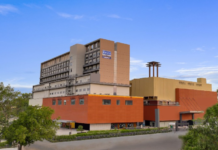By Jaymit Shah, CEO – Business Development, ECPL
India’s cities are aiming to be global leaders by focusing on sustainability and technology. Future cities will be smart, eco-friendly, and inclusive, using new building methods to fix traffic and pollution issues. They want to improve life by using smart technology, eco-friendly practices, and planning that includes everyone. They are dealing with challenges like climate change and fast city growth. It’s not just about building things; it’s about making fair and helpful communities. Governments, businesses, and local communities need to work together to make sure cities are good for everyone and can last a long time.
Unlike regular steel bars, fiberglass rebars don’t rust in tough environments, making buildings strong and lasting. Fiberglass rebars are also strong but lighter, which speeds up building projects, lowers costs, and makes construction more efficient. This helps solve big problems in India’s construction industry.
The Vision for Future Cities
The idea of future cities in India focuses on smart urbanism, using technology and data-driven solutions for urban planning and development.
Important parts of this vision:
1. Smart Infrastructure: Using technology such as IoT devices, AI, and big data to efficiently manage city services like traffic, energy, waste, and water
2. Sustainable Design: Using green buildings, renewable energy, FRP Rebar and eco-friendly materials to reduce carbon emissions and support environmental sustainability
3. Inclusive Development: Making sure urban growth benefits all with affordable housing, accessible public spaces, and efficient transportation
New Construction Techniques
New ways of building are very important for shaping how India’s cities will be in the future. They improve efficiency, lower costs, and support sustainability and resilience. FRP rebars are a key innovation in this regard: they are non-corrosive, non-toxic, and recyclable, reducing carbon footprint in construction projects. Additionally, their non-magnetic and non-conductive properties make them perfect for specialized uses requiring electromagnetic neutrality, such as in hospitals. This makes fiberglass rods useful in many ways in India’s construction industry.
1. Prefabrication and Modular Construction: Using prefabricated parts and modular building techniques speeds up construction, reduces waste, and helps the environment
2. 3D Printing: 3D printing is transforming construction by making detailed architectural elements quickly and affordably, including custom building parts
3. Green Building Materials: Sustainable materials like recycled steel, bamboo, and fly ash bricks are gaining popularity for being eco-friendly, durable, and cost-effective
4. Smart Building Systems: Automated lighting, HVAC, and other smart systems improve energy efficiency, cut costs, and offer remote control and real-time data for better management
Conclusion
Future cities in India are using new methods of construction and innovative designs to solve city problems effectively. These cities want to improve people’s lives and build resilient communities for the future. To make this happen, governments, businesses, and communities need to collaborate. Having clear guidelines for sustainability and planning for the future is crucial. Listening to the community makes sure that everyone’s ideas and needs are heard. These efforts aim to create new guidelines for how cities grow, focusing on taking care of the environment and being fair in India’s expanding cities.

























